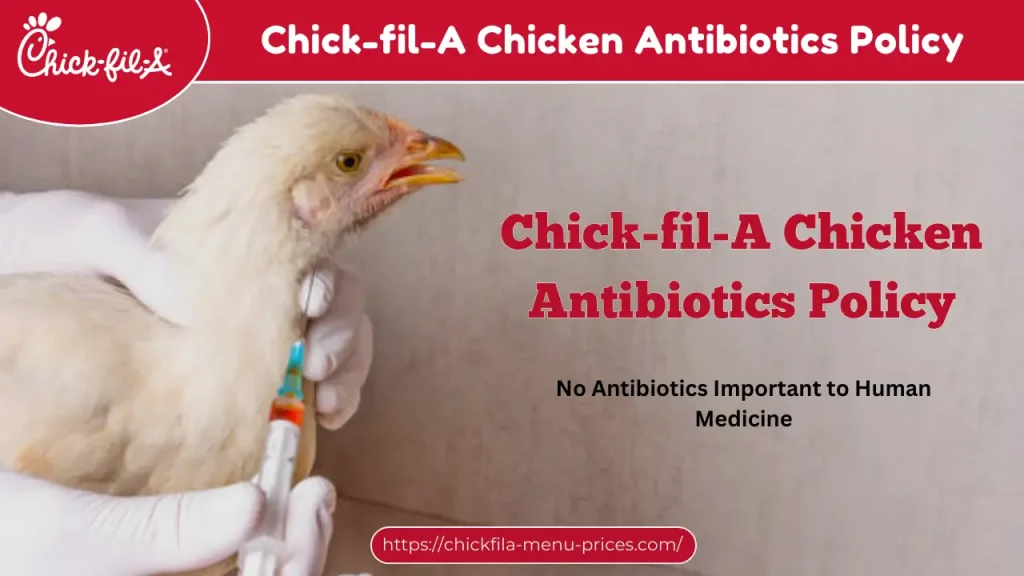Chick-fil-A Chicken Antibiotics Policy
Chick-fil-A has long been known for its high-quality fast-food chicken, attracting a loyal customer base that values both taste and ethical sourcing.
However, recent changes to the Chick-fil-A antibiotic policy have raised concerns among consumers regarding antibiotic resistance, FDA antibiotic regulations, and sustainable poultry practices.
Chick-fil-A Original “No Antibiotics Ever” (NAE) Policy
In 2014, Chick-fil-A chicken policy established a No Antibiotics Ever (NAE) standard, ensuring that all poultry sourced by the company was raised without any antibiotics throughout its entire life.
This made Chick-fil-A a leader among fast-food chicken providers, appealing to health-conscious consumers who preferred antibiotic-free chicken.

What This Means for Consumers
Despite the policy change, Chick-fil-A says its chicken is still safe to eat. They are now using antibiotics that are not important for human health to help prevent antibiotic resistance. There is no proof that this change will affect the quality or taste of the chicken.
The U.S. Food and Drug Administration (FDA) regulates antibiotic use in poultry to ensure safety for consumers. Chick-fil-A new policy follows FDA rules and USDA guidelines, keeping it compliant with federal standards.
How Chick-fil-A Compares to Other Fast-Food Chains
Antibiotic policies vary among major fast-food chains:
- McDonald’s: Received a “C” grade for its efforts to reduce antibiotic use in beef and poultry.
- Wendy’s: Also earned a “C” grade, indicating moderate progress in antibiotic stewardship.
- Popeyes: Received a “D” grade, reflecting minimal efforts to limit antibiotic use.
- Chipotle & KFC: Have stricter policies, earning higher grades for antibiotic-free chicken.
Compared to these brands, Chick-fil-A antibiotic policy change aligns with industry standards while maintaining public health concerns over antibiotic resistance.
Should You Be Concerned About Antibiotics in Chicken?
Antibiotic resistance is a big public health concern because overusing antibiotics can create resistant bacteria. However, Chick-fil-A NAIHM policy does not allow antibiotics that are important for human health, which helps reduce this risk.
The USDA and FDA have rules to control antibiotic use in poultry, making sure it doesn’t harm public health. It is important to note that not all antibiotic use in animals causes resistance problems. Using antibiotics carefully for animal health, as allowed under NAIHM, is seen as a responsible choice.
The Future of Antibiotic-Free Chicken
Chick-fil-A has changed its antibiotic policy, but it might go back to stricter rules if poultry farming improves and customers want it. As people become more aware of antibiotic resistance, they may prefer products that use fewer antibiotics.
This could lead the industry to use more sustainable and organic farming methods, which might change policies at Chick-fil-A in the future.
